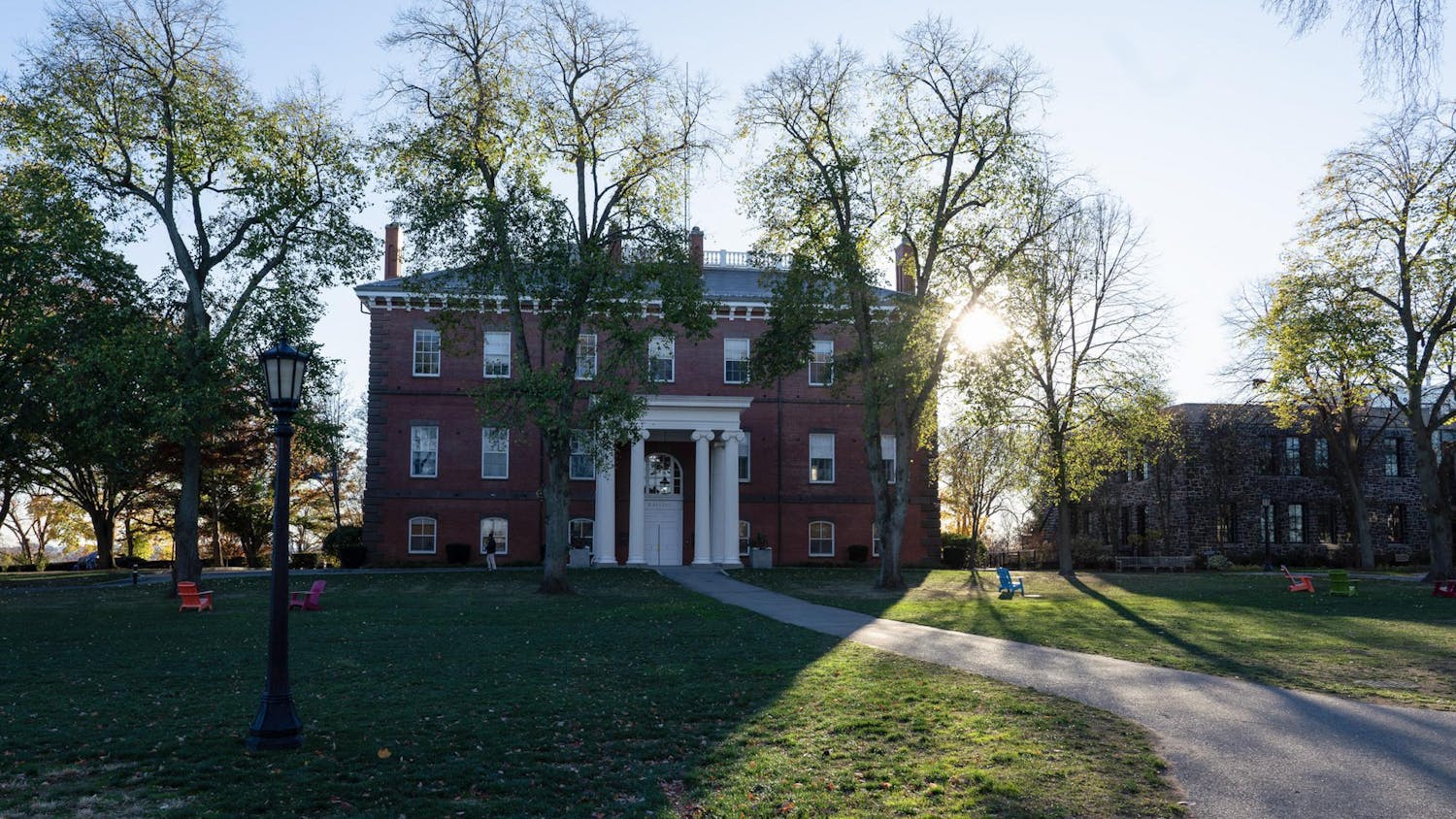For some, Hurricane Sandy's arrival at Tufts on Monday, Oct. 29 was nothing more than a welcome break from classes and a cozy day inside. For students from hard-hit areas on the East Coast, though, the storm was a frightening time of destruction and disconnect from family and friends.
The New York and New Jersey areas, home to many Tufts students, suffered some of the worst damage in Sandy's aftermath. Students from these regions experienced varying levels of destruction to their homes and neighborhoods, as well as reduced communication during the height of the storm. Many students recalled anxiety about the inability to reach loved ones.
"It was frightening not being there," junior Matthew Montgomery of Garden City, NY said. "We weren't able to talk for a couple days because the phone lines were down, so those few days were pretty tough."
Graduate student Kate Barnosky of Huntington Station, NY shared similar sentiments.
"Not being able to stay in touch when I knew it was a bad storm was scary," she said. "Not only did they lose power, but there was no cell phone service because a lot of the towers fell down."
Junior Katie Stuntz of Mamaroneck, NY explained that her entire neighborhood on the Long Island Sound had been evacuated. She was left waiting for days with the fate of her home unknown.
"It was scary because we had no idea what was going on," she said. "My parents couldn't get there because all the bridges were closed, and no one could check it out."
For many students, getting through the storm and reconnecting with family presented the most difficult challenges, while some are still faced with the prospect of a long rebuilding process.
Students both affected and unaffected by the storm are becoming involved on campus and in areas directly hit through relief efforts, both immediate and long-term.
"I didn't feel like there was anything I could do here, and it was really hard to stay in contact with everyone when no one had power," said senior Kaitlyn Fraterman of Brick Township, NJ. She began collecting canned goods, blankets, clothing, toiletries and water from students around campus to drive back home the weekend following the storm, said.
"I couldn't just stay here for the weekend when everything was going so horribly down there," she said.
Additionally, Fraterman and several of her housemates held a party on campus to raise money for relief efforts. By spreading awareness through Facebook and word of mouth, she was raised over $500 dollars and collected enough canned goods to fill her car. She dropped off the donations at a church to be distributed to families who had lost power, along with a portion of the money.
The rest of the money went to a local chapter of the Police Athletic League, which hosted a soup kitchen and ran a Meals on Wheels program, and to the Weather Channel, which is matching all Sandy donations, according to Fraterman.
Senior Anne Wolfe has also been active in relief efforts off campus. Although her family in Massachusetts was not hit hard by the hurricane, Wolfe wanted to get involved because she felt responsible to help those less fortunate than her in experiencing the storm's severe effects.
Wolfe reached out to a network of Boston residents who were connected through their previous work with Occupy Boston. Together, they formed a group called Sandy Relief Boston and have worked to coordinate relief efforts across the city and connect them to relief efforts in New York.
"A lot of people in Boston know people in New York or just want to help, but it's always hard to know how to help other than giving a check to the Red Cross," Wolfe said. "Having a space where people can donate whatever they have that might be helpful gives people the opportunity to be involved."
On-campus and citywide, Wolfe and her fellow group members have utilized their preexisting networks, blasting e-lists, emailing professors and frequently posting on Facebook to get the word out about donation information. The group set up nine donation sites in Boston, which have been flooded with donations, according to Wolfe.
"We're taking everything from first aid kits to winter hats to canned soups and trying to keep the donation list as updated as possible to supply the most immediate needs and coordinate efforts up here," Wolfe said.
The group coordinated with Occupy Sandy, an offshoot of the Occupy Wall Street movement, which has coordinated relief efforts in affected sites by setting up drop-off centers, forming medic networks to conduct door-to-door checks and addressing whatever other small needs they can.
"The group has been doing a good job of getting feet on the ground and really being able to coordinate using social media," Wolfe said.
Wolfe traveled to New York the weekend following the storm to deliver collected goods from Sandy Relief Boston's drop off centers, and she will be traveling there again this coming weekend.
The immediate scare is over for most, but the rebuilding has just begun and will continue to be a long and strenuous project. As direct aid transforms into long-term relief and Sandy Relief Boston adapts to these changes, Wolfe's work remains unfinished.
"We're aiming this to be a relief effort that is somewhat sustained," she said. "Sometimes it's easy to forget that once people have power back on, it's [not] the end of the road. It's going to be a significant rebuilding process and all of us really want to see this through."





